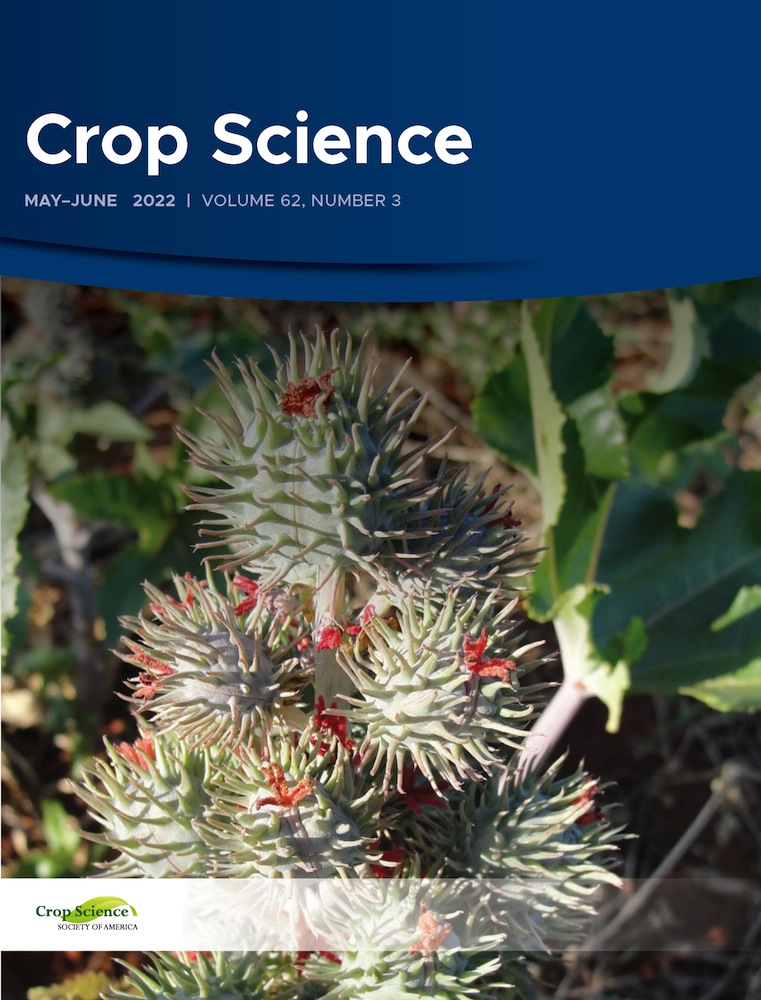Ver ítem
- xmlui.general.dspace_homeCentros Regionales y EEAsCentro Regional Chaco - FormosaEEA Sáenz PeñaArtículos científicosxmlui.ArtifactBrowser.ItemViewer.trail
- Inicio
- Centros Regionales y EEAs
- Centro Regional Chaco - Formosa
- EEA Sáenz Peña
- Artículos científicos
- Ver ítem
Isolation and characterization of a new imidazolinone tolerant mutant in cotton
Resumen
Cotton cultivars resistant to different herbicides have generated important advances in crop management. There is a wide range of cotton resistance to herbicides, however, commercial imidazolinone (IMI)-tolerant cultivars are not available. In this research, a new mutation that confers tolerance to IMI in cotton was isolated in the M2 generation after seed mutagenic treatments with sodium azide water solutions. The mode of inheritance of the trait was
[ver mas...]
Cotton cultivars resistant to different herbicides have generated important advances in crop management. There is a wide range of cotton resistance to herbicides, however, commercial imidazolinone (IMI)-tolerant cultivars are not available. In this research, a new mutation that confers tolerance to IMI in cotton was isolated in the M2 generation after seed mutagenic treatments with sodium azide water solutions. The mode of inheritance of the trait was evaluated in the F2 generation by the application of imazethapyr. The inheritance corresponds to a semi-dominant type, with a 1:2:1 distribution off tolerant: intermediate tolerance: not tolerant, in agreement with that observed in most IMI tolerant crops. The IMI-tolerant line behavior was evaluated in the field nursery after the application of the herbicide in the form of foliar and pre-emergence sprays. The tolerance level was high in pre-emergence applications and intermediate in foliar applications in comparison to the non-tolerant genotype, which showed a decrease in fiber yield and quality with both methods of application. After sequencing the AHAS gene, a point mutation corresponding to Ala205Val in the AHAS enzyme was found, which suggests it could be responsible for the increased IMI tolerance observed in cotton line SP 4172-32. Based on results from field assays it can be concluded that this mutant is a promising experimental line that can be used in obtaining IMI tolerant commercial cotton cultivars.
[Cerrar]

Fuente
Crop Science (First published: 11 July 2022)
Fecha
2022-07
Editorial
Wiley
ISSN
0011-183X
1435-0653
1435-0653
Formato
pdf
Tipo de documento
artículo
Palabras Claves
Derechos de acceso
Embargado
 Excepto donde se diga explicitamente, este item se publica bajo la siguiente descripción: Creative Commons Attribution-NonCommercial-ShareAlike 2.5 Unported (CC BY-NC-SA 2.5)
Excepto donde se diga explicitamente, este item se publica bajo la siguiente descripción: Creative Commons Attribution-NonCommercial-ShareAlike 2.5 Unported (CC BY-NC-SA 2.5)

